Text
UF in Japan Final Video Presentation
youtube
4 notes
·
View notes
Text
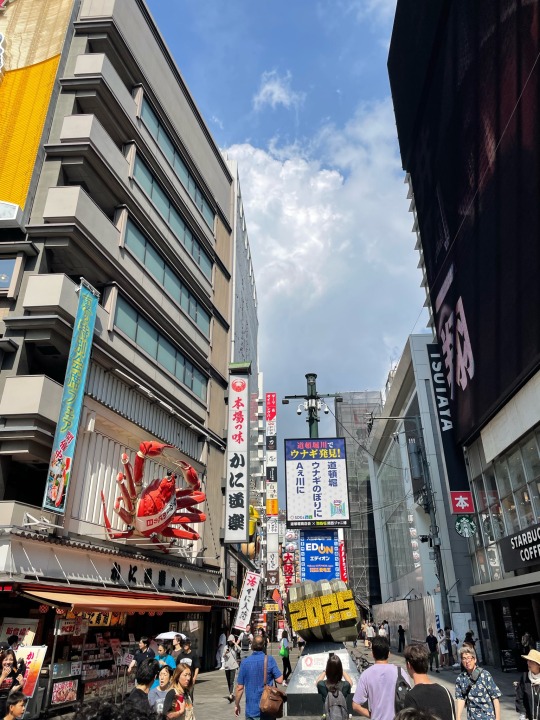
June 20 - Osaka Day Trip
Last night I was able to sleep a lot more than usual, so I was able to stay awake during discussion this time. After discussing what we’d do differently for next year, we head out to ride the train for Osaka. We arrived in Osaka and walked around Osaka Castle and also took our last group picture there. We walked through the shopping plaza and I made note of all the shops I wanted to revisit after we broke up. We went to American Village, which I had not been to before, and definitely did not feel that American. Next we headed for Dōtonbori. It was nice to see the Guriko sign again as well as the moving crab sign and the huge takoyaki sign. It felt nostalgic and slightly surreal that this time I was back with so many friends. It was bittersweet as we broke up for the last time and completed our planned excursion. But personally, while I hope my friends don’t take offense while reading this blog, I am ready to end this program. I have made many unforgettable memories though and I appreciate the people who have made that possible for me.
Academic Reflection
The reading was on the urban organization of Osaka and Kobe. It talks about how Japan has a lot of heterogeneity when it come to the organization of buildings, mixing old centers, residential areas, modern planned projects, etc, when considering three main urban fabrics, which follow a center to periphery Gradient.
The cities of Osaka and Kobe exhibit different urban fabrics and building types. One of the identified urban fabrics is the "High-rise and discontinuous modern fabric," which is characterized by a predominance of high-rise buildings in the central downtown areas. This fabric represents the modern parts of Osaka and Kobe.
The organization of physical space in Japanese cities is characterized by a greater diversity and variety in terms of architectural styles, land uses, and spatial arrangements. This can be attributed to factors such as weak zoning regulations, high compactness, fast piecemeal destruction/reconstruction of buildings and blocks, and incremental reorganization.
0 notes
Text
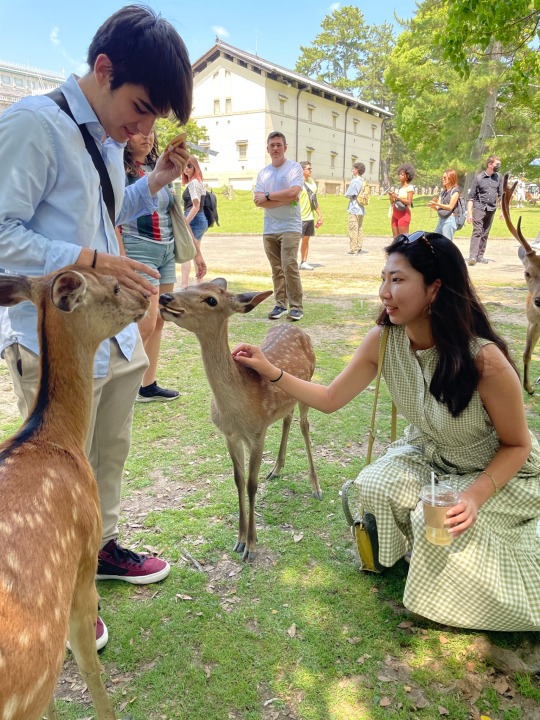
June 19 - Nara Day Trip
The day started with our last quiz of the study abroad, which I am glad about. After that was another sleepy discussion morning for me, with my friends looking at me falling asleep. After that we got on a train to go to Nara. We got off the train and walked to the deer park, abd sure enough, there were deer just roaming around like the monkeys at Arashiyama, except these deer were less afraid. The deers have learned the behavior to bow their heads for rice crackers, so deer with come up to you and bow and except a cracker from you. You have to show them your empty hands or else some deer just won’t give up. Other deer bit peoples shirts to demand more crackers. These deer are regarded as sacred but I have to say they act very unrefined. I fed some deer rice crackers and my crackers were gone in a flash.
After our deer feeding we went to Tōdaiji to see a very big Buddha. There were a bunch of smaller buddhas surrounding the main big Buddha. There was also a hole in the bottom of a thick wooden pile where people can crawl through to be reborn. I was wearing a dress so I think I made the right decision to not try. After a break at the Tōdajji museum, we went to the Kausgataisha. It was a cool shrine with a dark of room of lanterns that was very pretty.
On the last post I forgot to mention that my friends and I rented Yukata after the manga museum so I will include that picture as well.
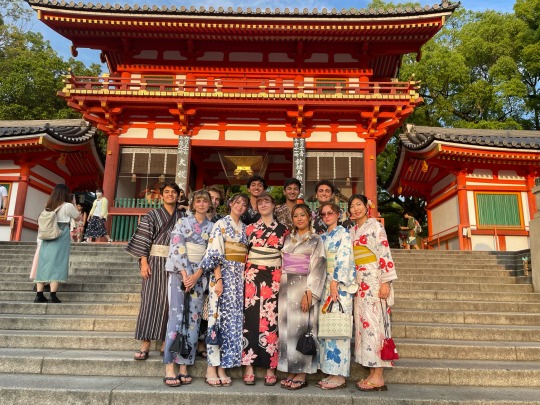
Academic Reflection
The reading discussed about how the Tōdaiji is a primordial Buddha and all the other buddhas are a branch off of the primordial Buddha. Even Kannon is a branch off of the primordial Buddha.
The Tōdaiji is the biggest indoor Buddha. The pillar with the hole in the base is supposed to be the same size as the Buddhas nostril, and those who can squeeze through it will be granted enlightenment in their next life.
0 notes
Text
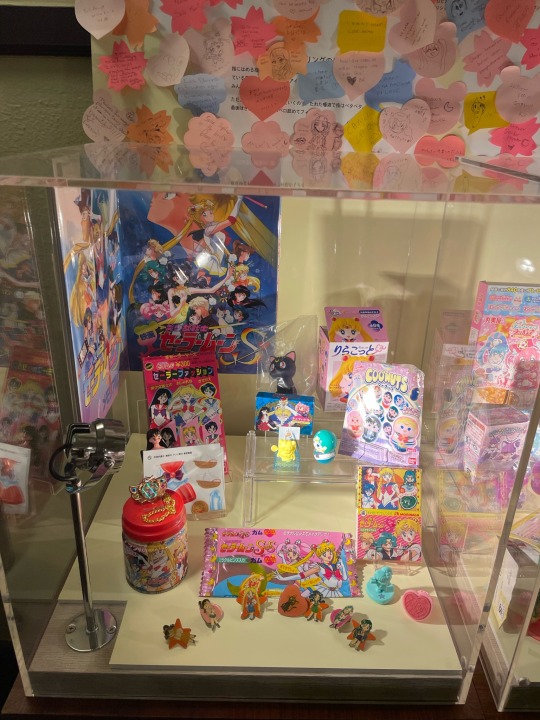
June 18 - Kyoto Manga Museum
My friends make fun of me for falling asleep during the morning discussions, but there’s no way I can stay awake with consecutively insufficient hours of sleep. So after another morning of sleepy morning discussion, we headed to the Manga Museum. The manga museum kind of reminded me of the Old Davie School back home because of the creaky wooden stairs. It had information of what manga is, how it is made, how it can be turned into tv shows, novels, etc, and of course, had a ton of manga and space to read them.
After flipping through some mangas and pointing out which ones we recognize, it was time to watch the kami shibai. Kami shibai is a form of entertainment for young kids where a story teller speaks and uses posters with drawings on them to usually tell some kind of story, scary or comical. It was impressive to watch the story teller do his job because he was a great entertainer. He involved the crowd, told a story, projected his voice, make jokes, all while having an audience of mostly English speakers, even though his English was not great. I really respected how he put on a great show for kids and adults.
Academic Reflection
The reading talked about the origin of manga, and the debates around it. Some people think that it started post world war 2, as Japanese newspapers were inspired by American newspapers that had comics on them. Other scholars of Japanese culture argue that it started with old Japanese scrolls with caricatures on them, which most seem to agree is a stretch. It also talked about Osamu Tezuka who wrote many manga while being a doctor and is regarded as the god of manga.
Another point it made was that Japan is now known for their manga and anime and exporting those forms of media allows Japan to exercise soft power, similar to how America exercises soft power through hollywood. I think that Japan does enjoy soft power through manga and anime but only with older children and adults. Young kids also watch a lot of anime like Pokémon, but they don’t know that the media they’re consuming is from Japan. However, adults and older children consume manga and anime and do understand that the entertainment they consume comes from Japan.
0 notes
Text

June 17 - Free Day USJ
It was a free day but the day started early. We left the Ryokan at about 7:30 AM to go to Universal Studio Japan. On the train, we saw a Japanese man wearing a gator shirt so when we got off, I asked him if he is a fan of the gators that was on his shirt. To my surprise, he said, “what is gators?” while looking at me very suspiciously and trying to avoid me. I explained that my friends and I were from the college on the shirt and then he said “oh I see” with a slight chuckle but he still seem terrified. I that slightly traumatized me because I usually do not terrify people. Despite that encounter, the day got better as all three of us got into Nintendo World even though it was a lottery system.
After checking if we got into Nintendo world, we went on the Hollywood Backdrop ride and the Jurassic park ride. I think those two rides were my favorite, since I like rollercoasters. Then we got some food, my favorites being the turkey leg, strawberry soda, and Anya curry bread. It was a nice day being away from the boys for a while.
0 notes
Text
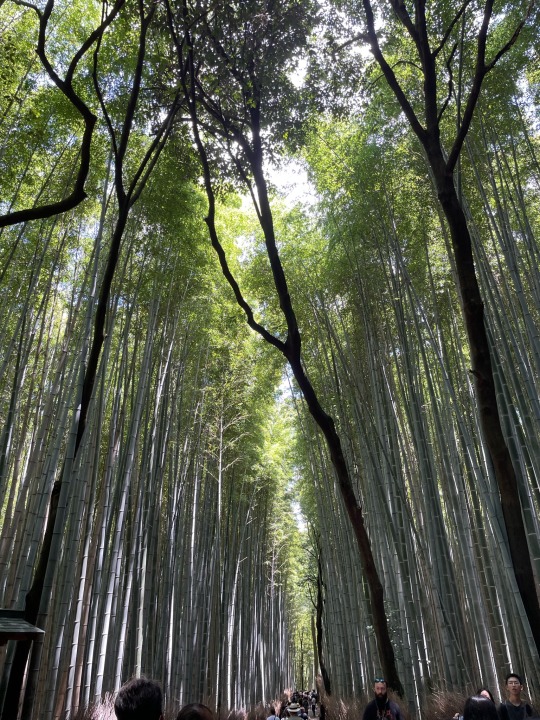
June 16 - Arashiyama Bamboo Forest & Monkey Park
This time I made it to breakfast at 7:30AM. It used to be easy waking up early because of the jet lag but now it is very hard to wake up by 7AM. I kind of miss my jet lag in that sense. After breakfast, I got ready and discussed with the group about the readings. I think the bamboo forest is what I expected, a trail with a bunch of bamboos soaring to the sky on either side. What was not expected was the hike up to the monkey park. There were many steep stairs, all of which the professor seemed to climb effortlessly. He walked all the way to the top with no breaks. He was also the one who said in the morning that the hike wouldn’t be too bad. I should have learned my lesson earlier but I definitely learned it this time that he always lies about the hike not being bad. After the long hike, we finally got to the monkey park. It was my first time seeing monkeys just roaming around and not in a zoo setting. Casey and I also went to the enclosure to feed the monkeys peanuts through a wire window. They knew the routine and reached with their hand to grad the peanuts. As expected with many animals, their up close details were a little gross but the baby monkeys were cute.
Academic reflection:
One of the readings talked about the Arashiyama Bamboo forest, and we learned how there are conservation efforts and that those efforts revolve around tourism since it is a big tourist spot. I think that the forest was very out together and reflected the amount of effort that goes into its maintenance.
The other reading was an excerpt from the Tale of Genji by Murasaki Shikibu. I had probably read this excerpt before but I forgot about most of it so it was a nice refresher. I learned that there are other works that are inspired by the Tale of Genji and that it is regarded as the first novel. I thought there would me more correlation between the excursion and the novel but my expectations were slightly incorrect.
0 notes
Text
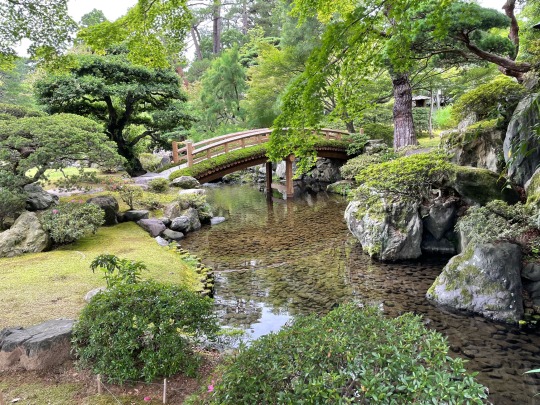
June 15 - Kyoto national museum and Kyoto imperial palace
The certain someone told me to not feel pressure while writing my blog post so I will try to write my boring blog the way I usually would. Today we went to the Kyoto imperial palace and the Kyoto national museum. I felt bad for missing the breakfast today but I just couldn’t wake up in time. Hopefully tomorrow I will make it.
The National museum had a lot of new acquisitions so that was cool. There were maps, scrolls, clothing, statues, and more. I went to the cafe at the museum and the French toast there was so good. I hope Nico is jealous of the French toast that was picturesque. The Kyoto imperial palace was less interesting than Himejijō because you couldn’t go inside but it was still cool to see the rooms through the glass doors. I have never paid attention to the roofs of castles, but the Kyoto Imperial Palace’s roofs were made of many layers of barks from cedar trees. We also learned that corridors were removed so that fire wouldn’t spread.
On another note, Nico finally got a loofah so I’m very glad that he can properly wash himself now. Xander also got a loofah so I’m glad.
I think the coolest thing from the Kyoto national museum was the Kosode worn by the young nobility. It is shaped like a kimono but with bright synthetic color used in the Meiji Era with a lot of embroidery. The one in the museum was purple with gold embroidery and was very pretty.
The reading discussed about how the Kyoto imperial palace was modeled after the Chinese chang’an. I think that it also made sense how the people living closest to the Kyoto imperial palace were the higher nobility and old families.
1 note
·
View note
Text
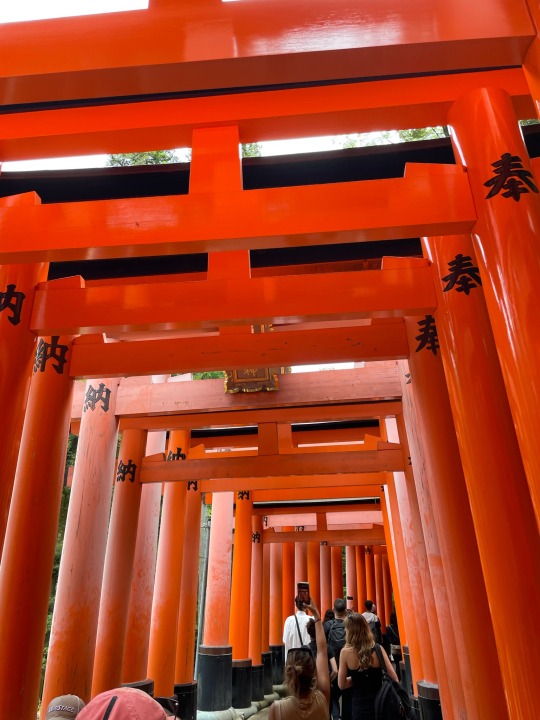
I feel pressure now writing my blogs because I know that a certain someone likes to read them. Anyways, we took a trip to what I think is one of the most scenic shrines in Japan, the Fushimi Inari Taisha. We took the train and it was only 3 stops until we got to Fushimi Inari. The numerous torii gates can be seen in the picture above. It was my second time here and I think there were more people here this time around, so it was hard to take good pictures. Something else that was new this time was going up the mountain. The first time I came, my friend and I decided that it was too much and went up partway but this time I didn’t really have a choice. Every time we go hiking I am reminded out how out of shape I am. But it was fun to spend time with my friends. Never did I think I’d come back to shrines and temples I’d been before with so many people.
Today was another day of translating Japanese for my friends. I don’t mind it too much, I feel like I should help because I have the ability to, and would be mean of me not to help them. But one thing that I might be forming a complex is my very low ability to read kanji. Even though I can read 2 out of the 3 alphabets in Japanese, so many things are written in Kanji that it holds me back from being able to read and understand fully what things say. Which leads to people like Nico saying that I can’t even translate everything. Speaking of Nico he offered me 0.7 cents for my help yesterday and boy am I so glad that that is how much my help is worth to him. I wish he would do a more thoughtful gesture if he really wants to show his appreciation. But he doesn’t really have to because I’m sure even without me my friends would stumble along to some kind of understanding eventually. Something I do enjoy and will probably never get tired of is surprising people that I am from America because my speaking ability is pretty okay.
I learned from the reading that the Inari god used to be for successful harvest but now is also for successful business. Fushimi Inari Taisha is the main shrine for the Inari god but there are many other smaller shrines that are also dedicated to the same god.
It also discussed about how religious buildings dedicated to the Inari god are not limited to shrines but also include temples. Because it is such a widely revered god/deity, there is no strict consensus as to the identity of Inari as even different priests have different ideas about this kami/deity’s origin.
1 note
·
View note
Text

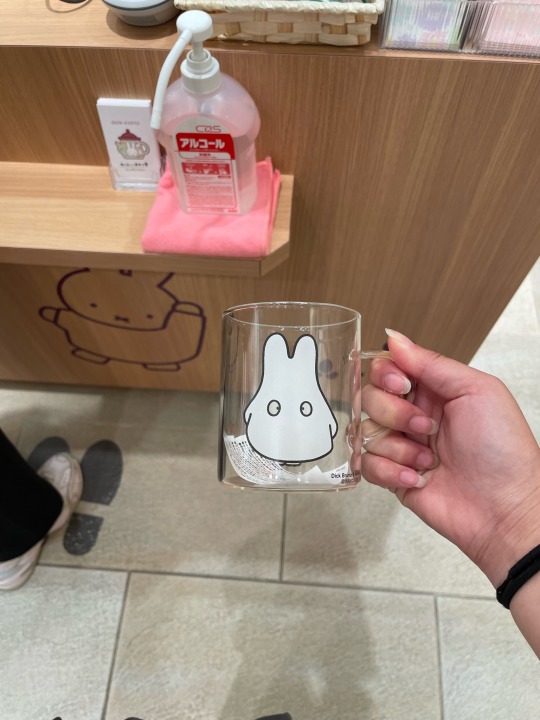
Today was a free day so I woke up later than usual and got ready. Since my friends want me to name drop them, I will. Casey, Chelsea, Nico, Xander, and I went to the Gekkeikan Okura Sake Museum. We learned about the process of sake making, and all of the different steps that go into it. The museum also had interesting artifacts such as the Okura family’s possessions like maps, writing, notes, family crests, and more. There were displays of olden tools that were used to make sale before most things have been turned into machines. However, even now, sake breweries rely on the human five senses to know when the next step is ready and to taste test the sake. Speaking of taste testing, we got to try 3 different sakes at the end of the museum tour. I tried a peach, melon, and daiginjo sake. Unfortunately the taste of the alcohol was too strong so I didn’t like the taste too much. I liked the scent of the daiginjo though. I think I’ll stick to my lemon sours and fruity cocktails. But it was nice to find out what sake tastes like and try different kinds.
I forgot to take pictures so the above picture is a Miffy cup I got in Gion where it is Miffy on one side and ghost Miffy peeping through the other.
Academic Independent Excursion:
I decided to choose the scholarly article Traditional Markets and Product Development The Case of Gekkeikan by Kenjirō Ishikawa of Dōshisha University. This article discusses about the traditional markets and product development of the Fushimi District of sake brewery through the lens of specifically Gekkeikan. It also talks about how it adapted to the emergence of a mass market and changing consumer lifestyles and the challenges faced by businesses during the rise of white-collar workers and the rapid changes in society.
The development of new sources of energy and transportation systems impacted the industrialization process in Japan by accelerating the forward progress of industrialization. The use of new sources of energy such as petroleum and electricity, the creation of new materials by the chemical industry, and the formation of new systems of transportation and communications by means of railroads, automobiles, the telegraph, the telephone, and the like, all contributed to the acceleration of industrialization. These developments allowed for the spread of mass production practices and mass marketing systems, particularly in the United States.
The key factors that led to the emergence of a mass market in Japan during the late 19th and early 20th centuries were the development of large cities as a result of great increases in population, the following emergence of city markets and nationwide markets, and the spread of education and increasing incomes. These factors led to a growing population, the beginnings of urbanization, diversity in consumption, and changes in systems of distribution.
Gekkeikan adapted its product development to cater to the changing consumer lifestyles by developing a way to produce preservative-free refined sake. This innovation allowed them to meet the demands of consumers, particularly white-collar workers and the middle class, who had adopted new lifestyles. Gekkeikan did this through bacteria control, temperature control, and by using glass bottles.
The article did mention some things that I also read about in the museum, such as the fine tuning of the use of heat in limiting the growth of bacteria and the global success that Gekkeikan experienced. Reading this article helped me understand that the emergence of a popular sake brewery is more than just technology but also business history and humanities.
0 notes
Text

I think that today was one of the most fun days on this trip. We went to Kiyomizudera, sannen-zaka, ninenn-zaka, and Gion. The area around Kiyomizudera reminded me of Asakusa because of the small stall and stops lining the streets, except Sannen-zaka and ninenn-zaka had way more, and Sensōji is a shrine and Kiyomizudera is a Buddhist temple. We drank water from the 3 streams to get blessed either with longevity, succsss, or romance. We also went inside Kannon’s”womb” which was a pitch black tunnel with a prayer stone inside that you can touch. You are supposed to be “reborn” as you exit the tunnel. Afterwards we broke up for lunch and my friends Chelsea, Casey, and Sam got ramen. Then we went back to check out the uphill stores. I bought some accessories and the four of us had many sweet treats. Next was the Gion tour. We walked through Gion and Chelsea, Eliza, and I went to a Miffy bakery store and bought merch. In Gion, we watched a Gion Culture performance, which included chanoyu, koto music, ikebana flower arrangement, bungaku dance, kyogen comedy, Kyomai dance, and bunraku puppet theatre. I think that the kyogen comedy and the kyomai dance were the most fun and interesting. Kyogen comedy uses physical humor, absurdity, and wordplay and originated from acrobatic performances and dances. It focuses on the lives of ordinary people and uses archaic but everyday language, which made it popular with commoners. Kyomai dance originated in Kyoto and was designed for small tatami mat parlors. It was cool to get a taste a different cultural activities in a short time.
In the reading we discussed about the womb, where it is the womb of the deity Kannon. You grab onto a wooden rail with your left hand and walk through the maze, although there is only one direction to move in. Partway through the path, there is a prayer stone you can touch with your right hand and make a wish. The reading also talked about how Kiyomizudera is a place for worshippers to make wishes for this present life. After making your wish, you move on to the rest of the maze and when you come out, you are reborn.
There was also a section in the reading about the stream that is divided into three different pathways and each stand for something different. One is for longevity, another it for success such as in your business or student life, and the third is for romance. You first wash your hand and then you drink the water. You don’t know which stream stands for which gift, but if you take water from more than one stream Kannon will punish you for being greedy.
0 notes
Text
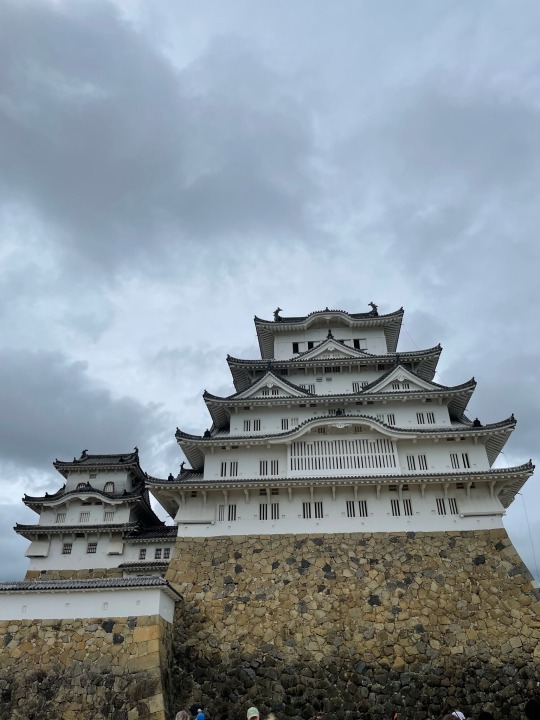
This morning I had western breakfast. It was toast, yoghurt, ham, eggs, and a salad. After breakfast, we met up again to discuss the readings. Then we went on a 2 hour train ride to see Himejijo, a castle that is a national treasure in Kyoto.
We first saw Princess Sen’s quarters, where she spent her time and got dressed, slept, etc. Then we went up the main keep that had 7 staircases with 6 floors and 1 basement. On the first floor there was a “Ishi otoshi” where soldiers would have dropped stones or shoot at enemies trying to climb the wall. On the second floor there was a “bugukake” or a weapon rack, where weapons like matchlocks and spears were placed, showing that the main keep was also used as an armory. The third floor had “Musha Gakushi” or a warrior hiding place where soldiers would be placed in secret compartments so they can ambush enemies. The top most floor had the Osakabe Shrine, where it protects Himeji Castle as the guardian deity of it. It was a long climb up the stairs but the views from the top were nice.
The most famous person who lived in Himeji castle was Princess Sen, the granddaughter of Tokugawa Ieyasu, the founder of the Tokugawa shogunate. She was married off at age 7 to Toyotomi Hideyori to keep peace between the two clans since they were known as rivals. However, the two clans fought when Princess Sen was 18, and her father gave her hand in marriage to anyone who could save her. She refused to marry her savior, and decided to marry for love and marry the heir of Himeji Castle. Although her husband and son died of sickness, it is interesting to know that she lived happy years as a woman during the warring states period.
It used to be thought that the daimyos had full control over the way castle towns were developed, because they have the most power considering that the emperor was mostly a figure head. However, although daimyo had some direction and authority over city layouts, many commoners settled where they wanted to and organically developed the cities. They even accommodated by relocating farms and temples to create more commoner districts. It is interesting how a solidified belief can be changed with further research and finding out the truth.
0 notes
Text

One the morning, I got to try the Japanese style breakfast at the Kyoto ryokan we are staying at for the first time. It was salmon, eggs, miso soup, rice, and pickled vegetables. I think that being in Japan has made me eat more healthily and exercise more than I usually do by walking a lot more. After that we discussed about the 5 assigned readings which were on Kinkakuji and zen gardens. We headed for the Golden Pavilion, which was a journey. We went to a bus stop but it was too crowded therefore all of us could not fit. Then we walked to a less crowded bus stop and finally we were all at the Golden Pavilion. Although it was my second time there, it was still awe-striking seeing the golden walls and the Phoenix atop the roof. Above is a picture I took. Next we went to Daisen-in, which is a building of the temple Daitokuji that houses the zen garden. It was quiet and peaceful place. The zen garden was interesting to look at because I don’t think I’ve ever seen a zen garden before that belonged to a temple. It was cool to see the real thing after reading about the Daisen-in in the readings.
One of the readings was by Mishima, a very popular author in Japan. The excerpt was part of a book where Mishima writes as the arsonist who burned down the Golden Pavilion, trying to get into the psyche and go through what was going through the arsonists mind. Part of what Mishima wrote was that the arsonist’s attachment to the beauty of the temple was stopping him from seeing beauty in other things, and therefore it must be burned down.
The other readings were about zen gardens. One of the zen garden readings was about the controversy about calling a zen garden a zen garden. It said that there are others who propose that they should be called Kara’s a duo as they were not unique to Zen Buddhism and they can exist in other people yards in any country. Another zen garden reading talked about the characteristics of zen gardens, such as how rocks can represent animals and mountains, and moss can represent islands and trees, and how the white gravel represent the waves of water. In the Dainsen-in that we saw, we learned that it takes characteristics from esoteric Buddhism, Shintoism, Daoism, and Hinduism. It was a quiet and peaceful place to be.
0 notes
Text
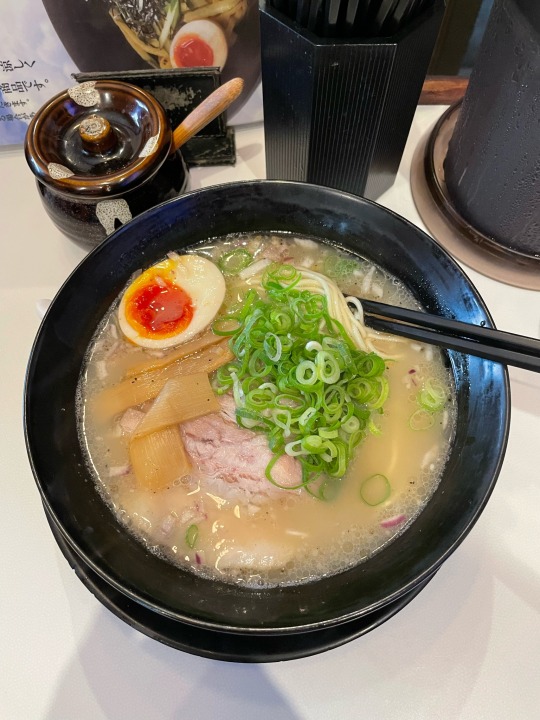
After sleeping past my initial alarm clock, I got ready in 15 min to get to the class discussion meeting with my luggage. We discussed about the history of Shinkansen in Japan and how Shinkansen have affected Japan in different ways. Then we rode a train in the middle of rush hour in the morning with all of our luggage and somehow fit everyone on the train. After that we finally rode the Shinkansen to Kyoto. I slept the whole ride and 2 hours went by in a flash. Unfortunately 4 people were not able to get off the Shinkansen in time and had to go all the way to Osaka and come back to Kyoto. This made me realize just how short the unloading time is for passengers on a Shinkansen. Kyoto station had cool architecture and was very packed with lots of shoppers for souvenirs. It was an 10 minute walk from the station to the ryokan we are going to be staying at for the next two weeks, but it felt like 20 because of the luggage we were carrying. We got our rooms sorted out and took a well deserved nap. My friends and I woke up and headed out for dinner at a ramen restaurant. There was good reason it was rated highly because my Shio Ramen was very good. After that we got a sweet treat and got a coffee float at an ice cream shop. I think that it will be different in some ways living in Kyoto than living in Tokyo as well being so close to a big station.
Academic Reflection:
The reading discussed about the effects of building Shinkansen and the history of it. It talked about the relationship between population and economic activity. If population goes up, economic activity will go up, and if economic activity increases, so will the population. With the creation of Shinkansen stations, populations can be seen to have increased with depopulation occurring in cities nearby that do not have a station.
Another point was the fact that people moving to cities with stations will leave their relatives and will rely on the city for help with child care, health care, shopping, and more. The elderly will have less people to interact with and their quality of life will decline and could also cause an increase in the cost of health care. With it being hard for both parents to work, one will have to stay at home to take care of the child or the parents will have to rely on private child care services. It is interesting that Shinkansen has had many affects on people’s lives in Japan.
0 notes
Text

With it being a free day, we had a later start to our day. A lot of the students in my study abroad group decided to go to the Ghibli museum and then the Mori Art museum. Because I had already gone to the Ghibli museum, I decided to go to a maid cafe with a couple of friends.
I found out that there are different types of maid cafes, such as the popular frilly clothed maid cafes, calmer higher end maid cafes, and idol maid cafes. Some are also more crowded depending on the type of day, as one place was very crowded around lunchtime, and another was empty around noon because it was a place more popular at nighttime.
We ended up going to the empty maid cafe because there was no wait. The crowded maid cafe had a wait time of up to one hour. I learned the system of a maid cafe, with there being a cover fee, at least one food or drink order per 60 minutes, and no pictures of maids unless you pay a certain fee. My friends and I sat down, ordered our foods, and was met with a surprise when the food arrived. The maids had us do a magic spell on the food each time to “make the food more delicious” with cutesy hand poses and words. We even got to see a maid performance which was cool. I would probably not have a need to go back again, but it was a cool experience.
Independent Excursion: Media Reflection
I decided to go to the maid cafe because of the anime Kaichou wa Maid-Sama that I watched years ago. It is a shoujo romance anime where the female lead is the school president and also a maid at a maid cafe. She is from a low income household and works the maid cafe job mainly because the pay is good, but comes to love the job and the people who work there after some time.
I would say that this media represents Japan as a country where working at a maid cafe is something that should be hidden, because the female lead goes through much trouble to keep her part time job a secret. It also represents Japan as a country where many activities with maids can be experienced through the commodification of maids’ time spent one on one with customers and their image. Customers can be expected to pay a fee for taking a photo with them, playing games with the maids, and more activities.
I would say that some representations were accurate and some were different. One of the similar representations was the commodification of maids’ time and image, as the cafe I went told us before hand that no pictures could be taken of maids without paying a fee. Another was the cutesy words and hand movements done by maids with food ordering. There was a “magic spell” we put on our food with our maids. One thing I thought was different from the anime was the shame that comes with working as a maid cafe. I think that if one embraces the fact that they’re working as a maid, they don’t have to be embarrassed of the fact that they are working as a maid. Especially because it is virtually impossible to hide your face working at a maid cafe, I think it is futile to try to hide the fact that you’re working as a maid. I think that if any, there are probably very few people who hide from their family and friends that they’re working as a maid at a maid cafe. It was interesting to see the differences and similarities in the world of maid cafes between the anime that I watched and the real maid cafe that I went to.
1 note
·
View note
Text
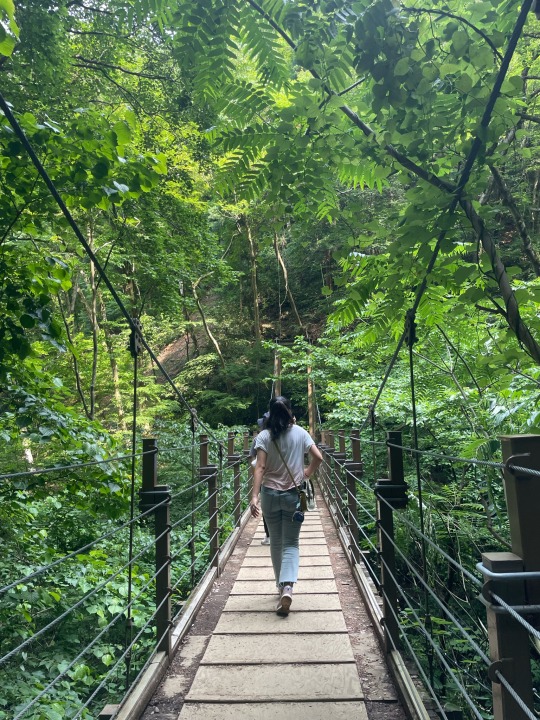
With a late morning start and a happy birthday to one of our study abroad group members, we started the day for Takao Mountain. After about an hour of travel to the base of Mt. Takao, we broke up for lunch. My friends and I got katsu-don and matcha ice cream. One of my friends got a matcha shaved ice that was as big as her head. We got back to the base of the mountain and got on the lift that was similar to a ski lift to go about halfway up the mountain. We walked up a lot of stairs and inclined pathways to the top of mount Takao. Along the way there were multiple landmarks, such as the sacred octopus tree, black marbles to slap, the Buddhist temple of Mount Takao, and the Shinto shrine of Mount Takao. I thought going up was hard but going down was still hard too. The declining hill was steep and my core started to hurt. What was cool was the suspension bridge on the way down which is pictured above. Eventually we made it down and got on the train to head back.
The reading was about the deforestation and the rejuvenation of forests in Japan. Based on the reading Japan should’ve been a barren place with slums and eroded land. But instead it is an industrialized nation with lush green forests. Despite the large and dense population. Japans human forest relationship has two phases. The first is a thirty thousand year preagricultural phase and the second is the last twenty five hundred years where humans have changed the characteristics of woodland. Trees used to be cut down by daimyo for construction to build castles during the warring periods but it was also used to build shrines and temples. Peasants usually used the trees for fertilizer and fuel.
After the Edo period, Japan started to protect and replant trees because they cut so much down. There were mainly two types of forests, protection and production forests. The lords forests were for the daimyo but because the rules were not clear, peasants would encroach on those forests for food, fertilization, and fuel.
0 notes
Text
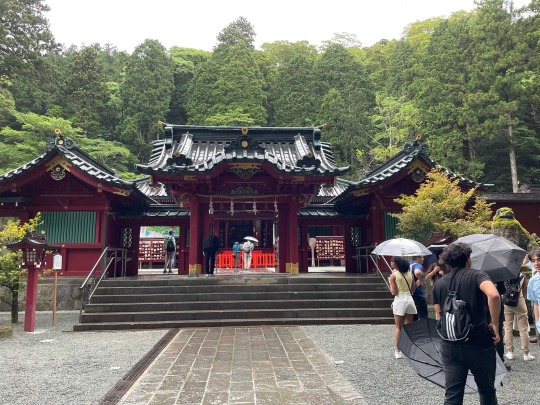
Starting bright and early, we departed at 8:20AM for our day trip to Hakone. Hakone is known for being a famous spot for hot springs. We took the train and the bullet train for a couple hours to get there. We had great soba and espresso ice cream. Throughout the city there were merchandise and posters and even a statue of Evangelion characters, because one of the settings of Evangelion takes place in Hakone. We took a cable car to the top of the a mountain where they boil eggs in sulfur, which was very very cold with the wind blowing strong. The eggs are boiled in Owakudani’s natural hot springs and the sulfur turns the eggs charcoal black. Then I saw the Hakone Sekishō, a type of gate used in the Edo period to check people who traveled in and out of the Hakone. The dogs at the front of the gate were covered in moss and eminated the “sabi” aesthetic. We also took a boat, bus, and walked to reach the Hakone shrine. It was a long, cold, and wet day.
Sekishō were built to stop daimyo from collecting weapons. It also regulated who could travel between cities. It partly held daimyo’s wife and heir as hostages in Edo and kept them from traveling so that the shogunate had leverage if a daimyo tried to start a rebellion.
It was interesting to see the different buildings that were around a sekishō, such as horse stables and travel permit checking points. Hakone used to be one of the most important sekishōs and there was known for the guardsmen being very strict with following the rules. Temples also built sekishō to get funds from travelers. It is interesting that sekishō were not only political but religious. The reading also talked about how samurai lost their masters in wars and that the daimyo feared that the samurai would want war again instead of living idly. The bakufu saw these rōnin or unemployed warriors as a security risk. Some young bushi formed gangs known as kabukimono and contributed to civil unrest. It was cool to see the real thing that I read in the reading.
0 notes
Text
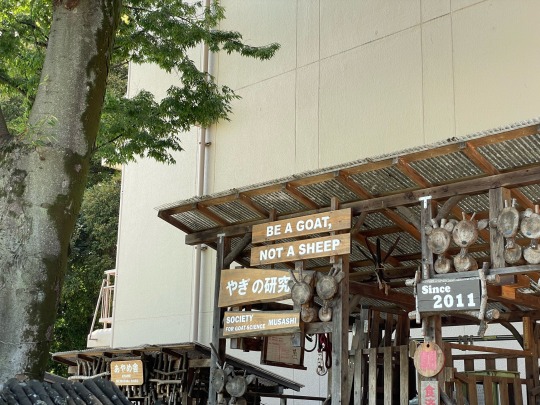
There was no reading for today, so that was nice. Instead we had activities planned with Musashi University and their students. We traveled to the university in the morning and had a lecture about identity through the lens of language learning. Then we discussed with small groups about ourselves after filling out a worksheet. We talked about who we were in terms of siblings, major, age, hobbies, favorite music, and more. The Japanese students’ English was very good, I was surprised. It’s funny to me that sometimes while Japanese people want to practice their English with me, I want to practice my Japanese with them. Trtttttttttt. After our activity was done, we had lunch in the nearby area. I had hayashi rice and my friends had Omurice. Then we met up at the university again to have a tour of the university. It was very small compared to the very large University of Florida that we come from, even though the campus had a junior high school and the high school attached to the university. Pictured above is the goat pen with the amazing quote, “be a goat not a sheep”.
With our group we talked about our identities and what aspects of identities are most important to us. In the lecture the Musashi Professor talked about how identity is not decided all on our own but also partially pushed on us by others. That was an interesting point to think about. I think that others push on the identity that I am East Asian on to me because I am the minority and my facial features stick out in America. But because of that I also have a strong connection with my ethnicity and the languages that I can speak in my identity.
With our small group, we also discussed about climate change and technology. While most people said that they think that climate change will get worse, there was one person who was optimistic and said that he thinks it will get better. We also discussed about how technology will be used in the future and I think we mostly thought that technology will continue to encompass more of people’s lives and that people will find ways to create a social life technologically more. It was an interesting lecture and was a fun way to interact with Japanese university students.
0 notes